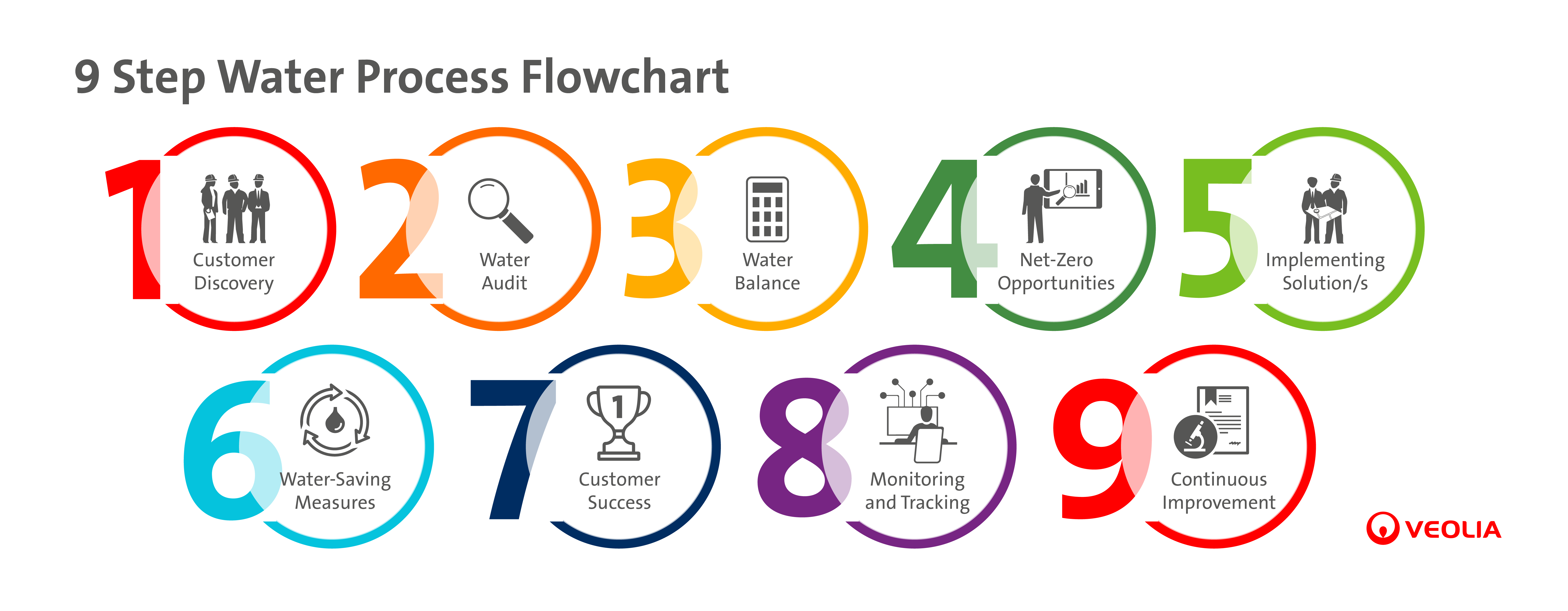Trust Us to Drive Your Sustainable Water Management
Our Digital Solution Hubgrade Water Footprint is a complete solution for measuring, monitoring, documenting, predicting, and optimizing water footprints across nearly all industries, in order to help you rapidly improve operational efficiencies, make meaningful progress towards sustainability goals, and ensure compliance with ever evolving regulations.
By combining real-time in-field data, artificial intelligence, and best-in-class domain expertise into a single resource, we provide plant managers, sustainability leaders, and senior executives with the information, tools, and answers they need to make intelligent water and business decisions.
Hubgrade Water Footprint provides:
- Transparency by clearly tracking water usage and waste down to the equipment level, leveraging AI to predict future needs so you can make timely operational decisions.
- Resiliency through live recommendations of operational anomalies and detailed risk assessments at both the corporate planning and plant level.
- Net Positive ambitions with personalized KPI tracking, fleet optimization metrics, and footprint reduction tracking, all backed by Veolia’s vast water domain expertise.
"By embracing water sustainability practices, enterprises secure long-term viability in an increasingly resource-constrained world," said Bernie Anger, Chief Digital Officer at Veolia | Water Tech. "Hubgrade Water Footprint acts as a catalyst in the evolution toward ecological transformation."
Discover the Power of Hubgrade Water Footprint
Hubgrade Water Footprint is designed to respond to your specific needs, offering solutions for sustainability accounting, climate risk prevention, business continuity, and footprint reduction.
- Unlock Sustainable Water Management
-
Our cutting-edge solution empowers you to optimize water usage and contribute to a greener future. By seamlessly integrating advanced analytics and intelligent monitoring, you gain unprecedented insights into your water consumption patterns. Identify inefficiencies, pinpoint areas for improvement, and make data-driven decisions that conserve this precious resource.
- Embrace a Water-Wise Approach
-
Join the movement toward responsible water stewardship. Our innovative technology enables you to minimize your environmental footprint while maximizing operational efficiency. Experience the peace of mind that comes with proactive water management, ensuring a sustainable supply for generations to come.
- Elevate Your Sustainability Efforts
-
Demonstrate your commitment to environmental responsibility by adopting our cutting-edge solution. Align your organization with global sustainability goals, enhance your brand reputation, and contribute to a better tomorrow. Empower your stakeholders with tangible actions that protect and preserve our most vital resource.

